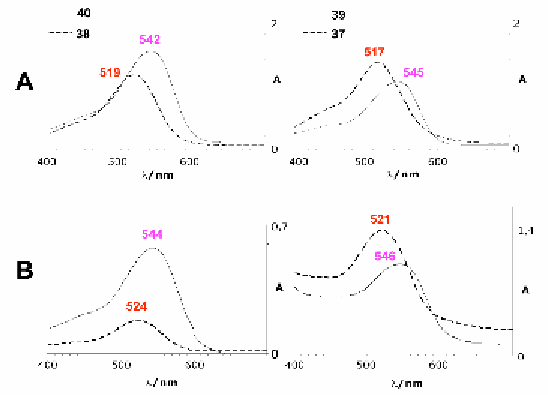Biology Reference
In-Depth Information
Fig. 9.15
Visible spectra of malvidin (
37
), oenin (
38
), malvidin-8-
C
-vescalagin (
39
) and
oenin-8-
C
-vescalagin (
40
) in aqueous solutions at pH 1 (
A
) and 3.2 (
B
, wine model
solution).
It would be obviously quite inappropriate to infer from these results
that these anthocyano-ellagitannin pigments are major players in wine
coloration, but they can nevertheless contribute to its modulation during
wine aging in oak barrels. Their color is in agreement with the purple
tints observed in young red wines, and more specifically, with the
enhancement of their crimson color, which is observed in the presence of
oak wood ellagitannins (Vivas and Glories, 1996). This ellagitannin-
mediated color modulation had previously been attributed to the
participation, upon wine oxygenation, of ellagitannins in the production
of hydrogen peroxide, which can in turn oxidize ethanol into ethanal,
being itself involved in the formation of ethyl-bridged anthocyanin-
flavanol purple pigments (Timberlake and Bridle, 1976, Vivas and
Glories, 1996, Escribano-Bailón
et al.
, 1996, Dallas
et al.
, 1996, Lee
et al.
, 2004). This process remains plausible, but the direct formation of
purple-colored anthocyano-ellagitannin covalent adducts constitutes
another chemically sound alternative that must be kept in mind when
evaluating the evolution of anthocyanin content and color in wine during
its aging relying on contact with oak wood not only from traditional

